What is ‘barkitecture’? This is how designers are bringing pets to the forefront of their projects
Designing a home that makes living with pets easier, and more aesthetically pleasing, might just be the key to a happy home. We meet the designers tasked with making spaces that work for humans and animals too

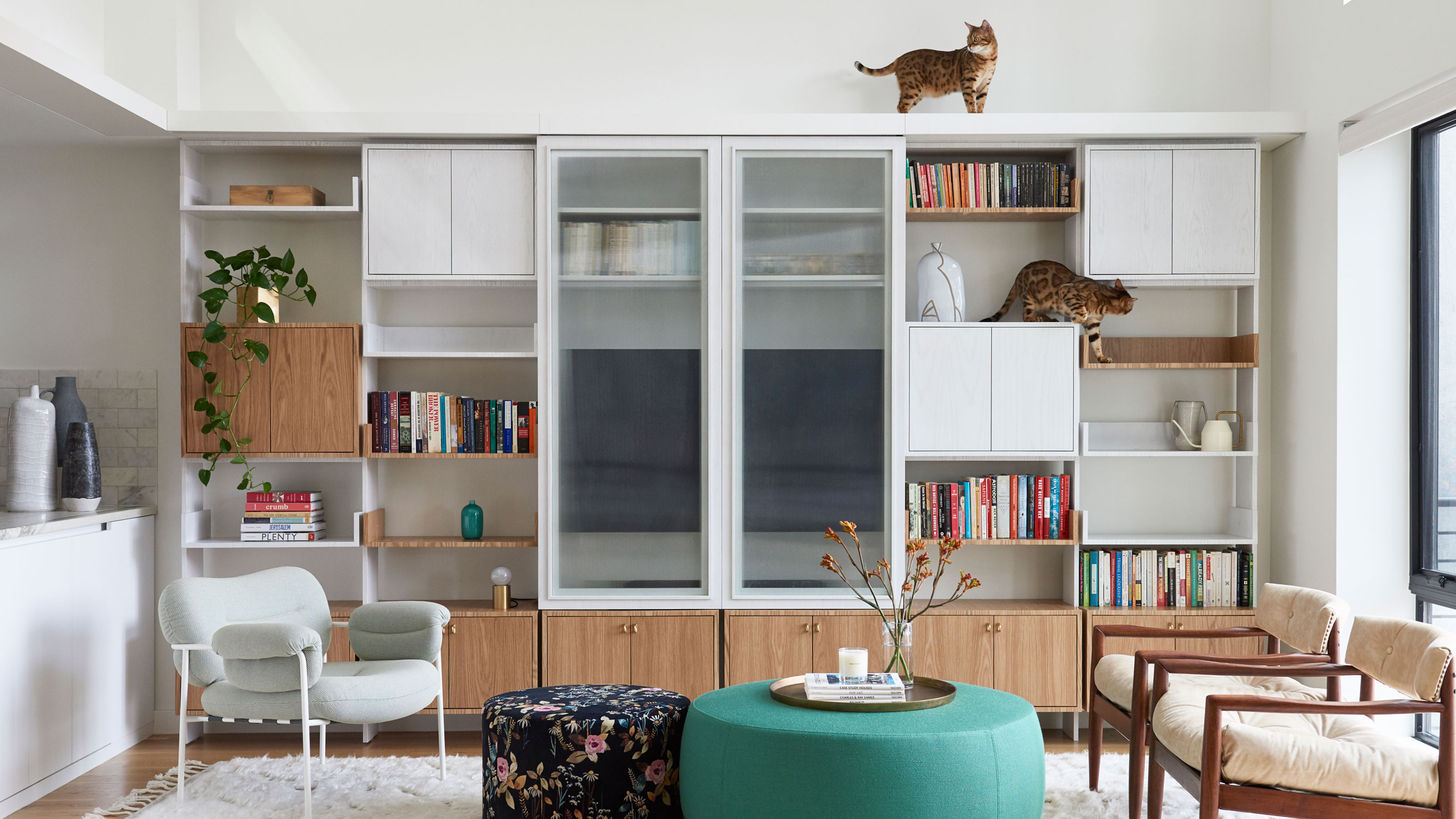
Once upon a time, the most you’d do to make your home a pet-friendly space might have been to buy a scratching post or add a cat flap into the backdoor. But there’s a growing phenomenon for designing spaces with special architectural or built-in features for the four-legged members of your family in a way we’ve never seen before.
Undoubtedly, it’s in part spurred on by the popularity of these ideas on social media. In fact, it’s Pinterest that has dubbed the concept ‘barkitecture’ in identifying the biggest interior design trends of the year on the platform.
But more than just a novelty, there’s a kernel of self-care in designing a home that works well for pets. Most pet owners will say that their pet is beneficial to their wellbeing, but looking after a cat or dog, in particular, comes with its own blood pressure-raising factors. This might be centered around the wear and tear your animal contingent can have on your home, or just making caring for, and entertaining, them easier. With the right ideas, it’s possible to live better in your home with pets.
Here, we ask the architects and designers, who have designed spaces for happier pets, for their advice.
'Barkitecture' ideas for your home
The key to good 'barkitecture' is that you can't tell it's designed for pets, says Nathan Cuttle, founder of New York-based Studio Nato. 'We find that animal-centric design tends to be best when it's incorporated as part of the greater design of the home,’ he explains. ‘This means finding ways to incorporate it into the furniture and the fabric of the home as much as possible.’
1. Create a space that keeps cats entertained
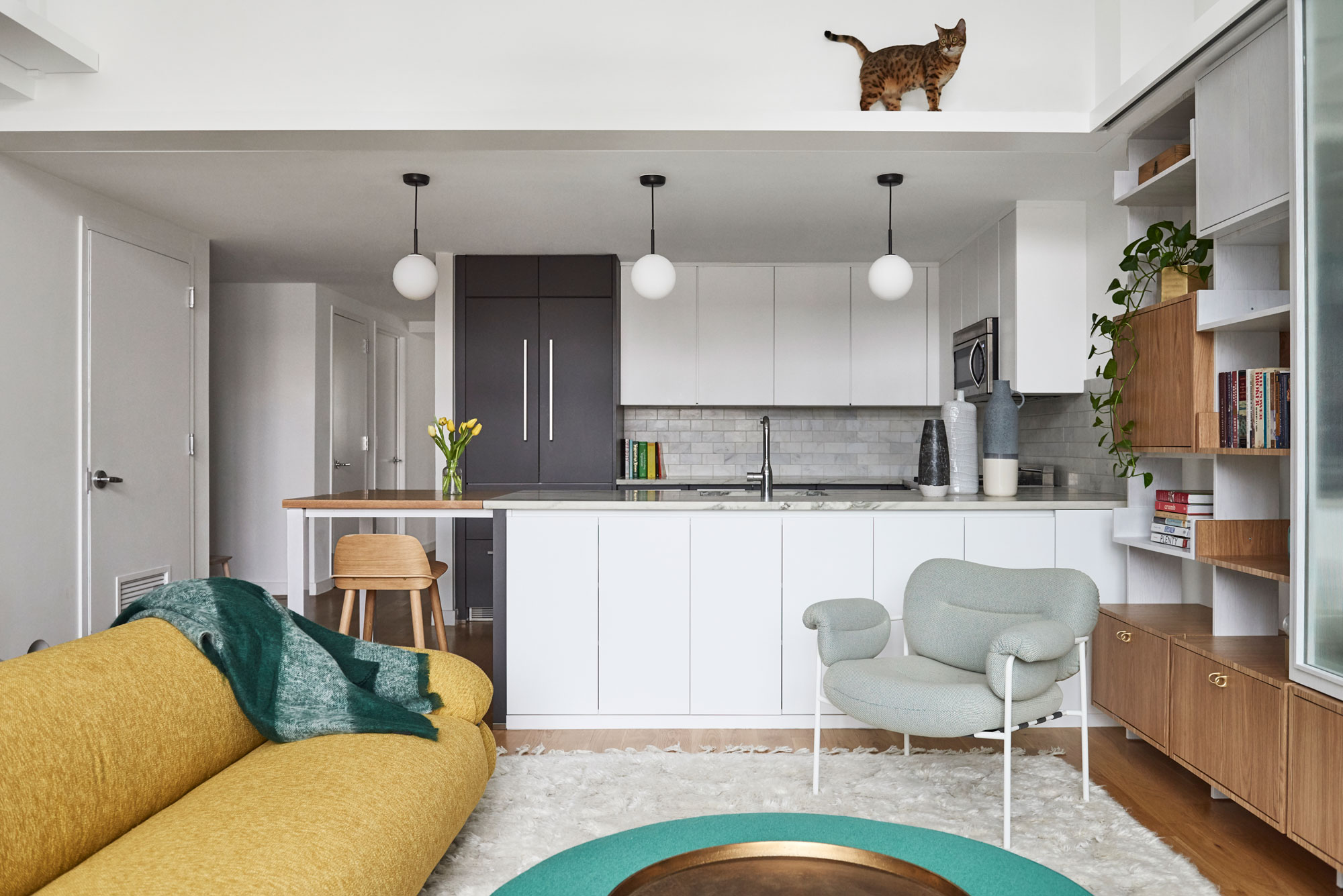
While dogs might have inspired the portmanteau ‘barkitecture’, it’s designing spaces for cats that potentially has more interesting applications architecturally speaking. Take the example of Bengaltopia, a New York apartment designed by Studio Nato, named after the owner’s pet Bengal cats. ‘Our clients had specifically selected this particular breed of cat for their liveliness and playfulness,’ explains Nathan Cuttle, founder of Studio Nato. ‘It was evident from the start that the cats brought an enormous amount of energy to the space and played an important role in our clients' lives.’
‘From various descriptions and anecdotes, including a dedicated Instagram account, we began to imagine the home almost like a large-scale, sophisticated cat tree,’ Nathan adds. ‘It was clear that designing a home for our clients also meant designing a home for their cats so we created a cat house without the off-the-shelf, space-eating, cat accouterments.’
The Livingetc newsletters are your inside source for what’s shaping interiors now - and what’s next. Discover trend forecasts, smart style ideas, and curated shopping inspiration that brings design to life. Subscribe today and stay ahead of the curve.
The living room storage hides secret holes that allow the cats to access a so-called “catwalk" above, which spans the perimeter of the space. ‘The cats love using this to reach some of the higher transom window ledges.’
While this design is bespoke for the space, the ideas can apply on a smaller scale too. ‘You don’t have to go with custom millwork,’ Nathan suggests. ‘A simple cut out in an off-the-shelf cabinet or existing wall can do wonders for a pet and its owner.’

Another, perhaps unexpected element in Bengaltopia? A large running toy, like an oversized hamster toy, helps these cats get the exercise they need. ‘ One thing is these cats have a lot of energy,’ Nathan says. ‘The high ledges and a wall-mounted cat wheel were designed to allow them to run and play to their heart's content.’
2. Reinvent the cat flap
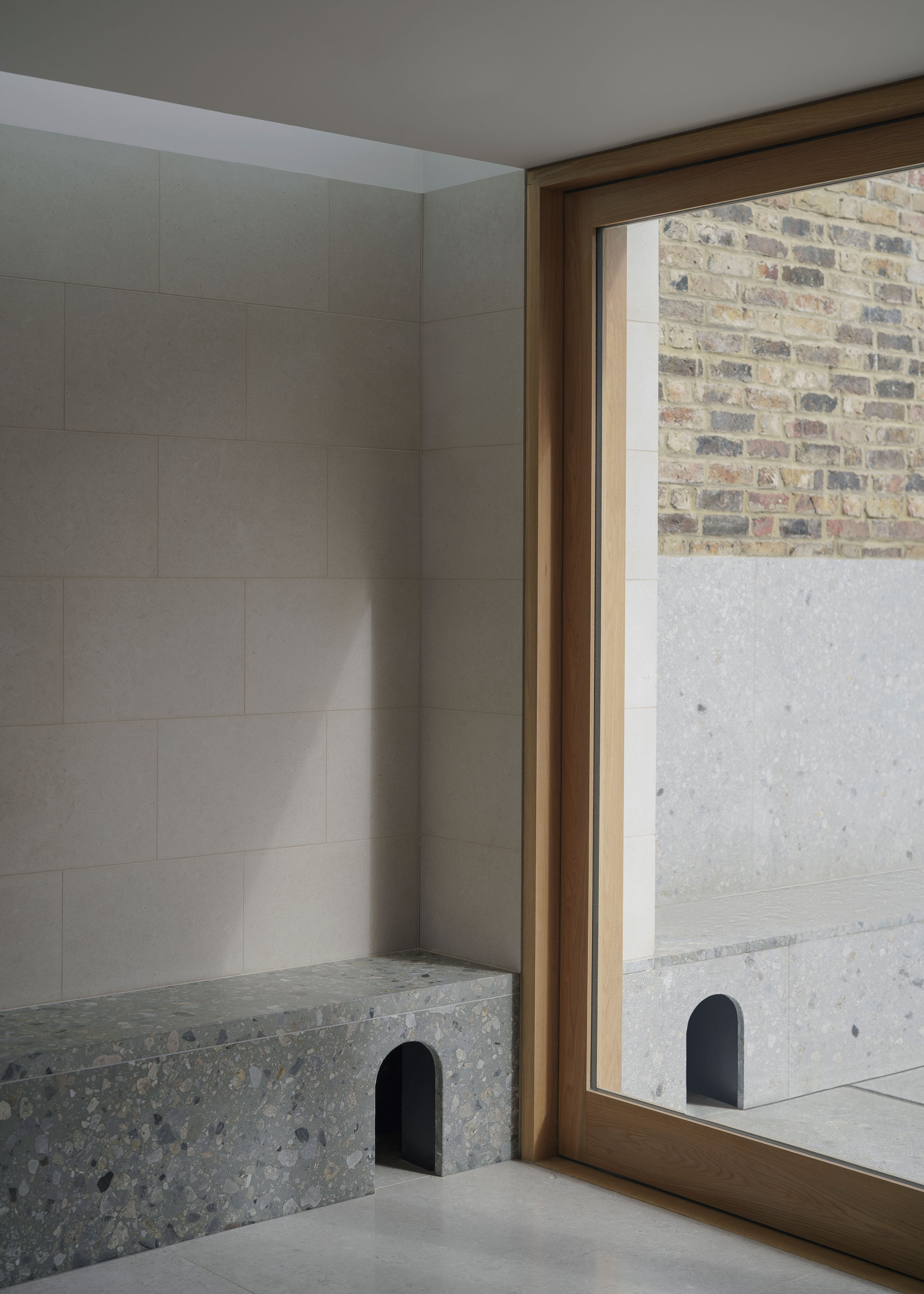
Cat flaps aren’t the most attractive additions to a house, and for the modern home which is often designed with back doors that are large expanses of glazing, the traditional cat flap no longer has a home.
Yet, if you have an outdoor cat, without a cat flap you’re at the mercy of needing to let the cat in and out at all times of day, making your naturally independent feline a little more dependent on you.
This was one concern for clients of architecture firm Architecture for London, during the renovation of their property. ‘Through discussions with the client, it was decided that the usual solution of placing a cat flap within the door would interrupt the rhythm of the glazing to the dining room,' explains Ben Ridley, design director at Architecture for London. ‘As the rear terrace was conceived as a landscape carved out of rock, it seemed appropriate to form a cave-like tunnel for the cats to access the garden.’
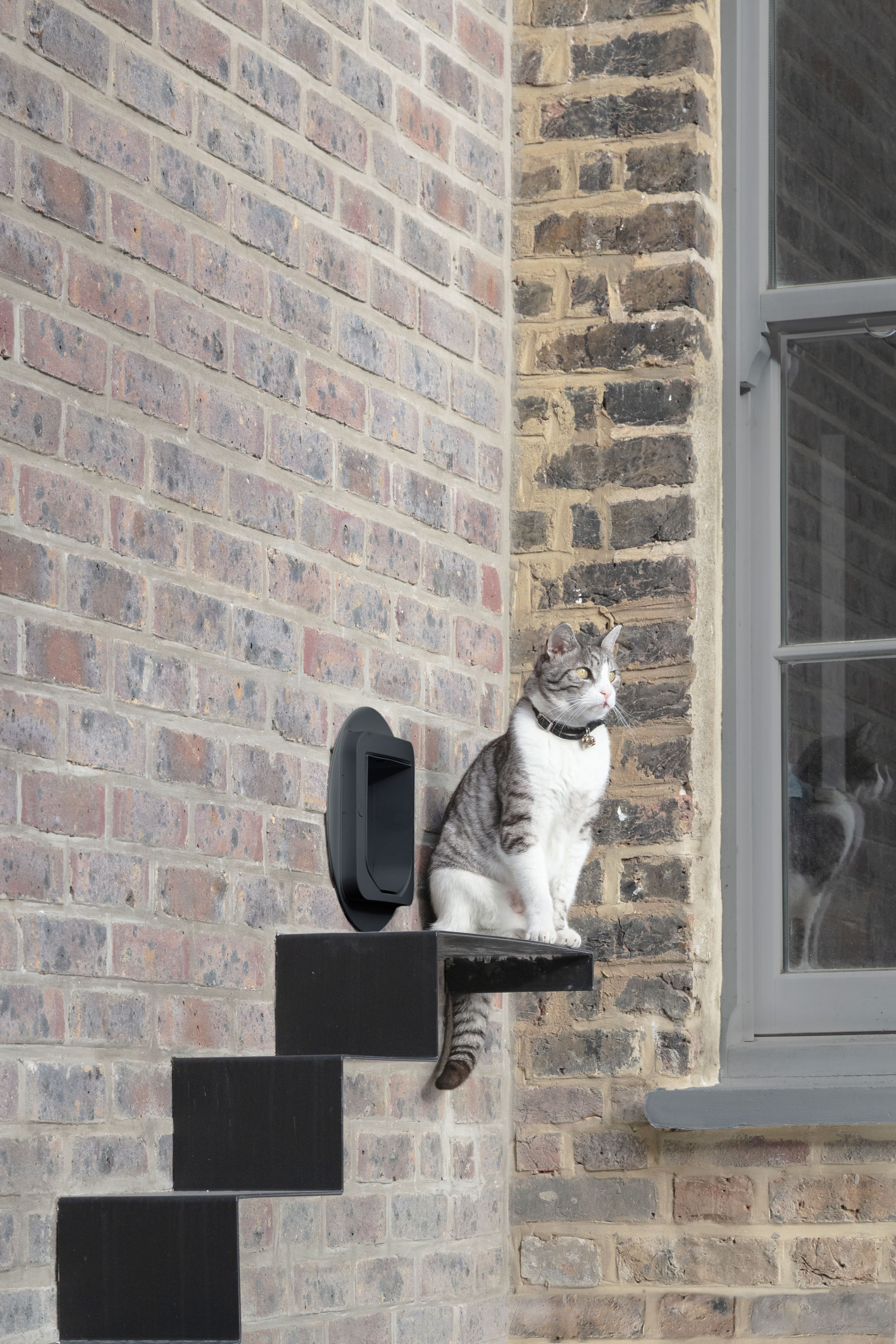
If you’re looking to make your home as green as possible, a regular cat flap can cause issues for a home’s airtightness too, as Ben explains. ‘Due to the climate crisis, carefully considering how air enters and exits your home is crucial. As Passivhaus architects, we know that integrating good quality cat or dog flaps is more sustainable than leaving doors or windows open.’
In another of Architecture for London’s projects, a cat flap was installed not at the ground floor level, but on the first floor, with a metal staircase climbing the side of the property, so that the cat could leave and enter at will on an upper storey.

For another take on integrating a cat flap into a room, take inspiration from this kitchen design created by a designer at Neptune. This modern kitchen idea sees a door with a glass insert offer an airlock of sorts between indoors and out for the cat, giving space for it to shelter from the rain, but also some control over when it enters and leaves the house when needed.
3. Design in doors to provide secret spaces for your cat

'You'd often find the cats snuggled one on top of the other, in a ray of sunshine, on one of the chair cushions,' says Studio Nato's Nathan Cuttle of the firm's Bengaltopia project, 'yet they also love the tightest, smallest spaces.'
Cats have a tendency to find somewhere to sit in the most interesting of places in your home, but if you create a specific cat-friendly area, you might keep them out of drawers, cupboards and other spaces they shouldn't be in.
In this home design, created by interior designer Brooke Copp-Barton, under stairs storage is provided, but also incorporates a cat door to provide secluded areas away from the dog who likes to steal the cat's food given half the chance.

Another area you might want to hide away is your cat's litter tray. 'In Bengaltopia, we hid the litter in the pantry closet but retained ease of access by creating a round hole in the wall through which the cats could come in and out,' explains Nathan.
In this property, re-designed by Jessica Helgerson Interiors, the client requested a cat door as a bathroom idea, a common location for a litter tray, that can be used to discretely provide space for the cat and easily cleaned out.
4. Add a dog bath to your mudroom

When it comes to architectural choices for the different species, you could say designing for cats is more about creating a space for you both to share and enjoy, designing for dogs is more... damage control.
There’s one domain that perfectly suits to adapting to dogs. The mud room. While you might not have a mud room per se, this space could be a laundry room, porch or whatever space your home's back door opens into.
These spaces lend themselves well to containing mess and mud brought back from winter walks, ensuring the only paws that enter your living spaces are squeaky clean.
Why not, then, include a dog washing station idea in your laundry room? 'I call it a dog shower, but I’ve also heard it called a ‘pet washing station’,' says interior designer Louise Bramhill, founder of Studio LBI. 'Whatever you call it, its certainly a practical addition for dog owners.'
This size of sink can bring other benefits to your space too. 'The dog shower has been handy for washing muddy boots too, Louise adds, 'and small toddlers could go in here too if you’re desperate after a muddy walk.'
5. Consider built-in dog beds as part of your design

Laundry room cabinetry also lends itself well to being adapted for storage for dogs, whether that's for food or for toys and other accouterments.
You'll find another clutter issue when you're a pet owner is where to put a dog's bed, especially if they're confined to a certain part of the house at night time. Loose beds on the floor can get in the way and be a trip hazard, so the idea of built-in beds included in a cabinetry design for a utility room, as in this Neptune design, is a clever one.
If your dog is crate-trained, it'd be possible to incorporate this into your millwork too, with a simple addition of some bars across the opening and an access door.
How do you choose pet-friendly furniture?
The main concern when choosing furniture for a house with pets is durability. That means, first of all, any material should be easy clean. When choosing textiles, whether that's a sofa, rug, carpet or cushion, it's important to avoid looped finishes, as it's easy for dogs and cats to get claws caught, causing them distress and damage to your furnishings.
Also think about the type of furniture your pets will enjoy. 'Every home needs a friendly space where cats can find comfort to snooze,' says Sonja Farrell, founder of pet-brand Cheshire & Wain, which has created a range of design-forward cat furniture called Roundhaus in collaboration with furniture designer-makers Lozi Designs. 'Rather than retreating under the bed or the sofa, Round Haus 01 provides an enclosed house and inviting bed that cats can call their own.'
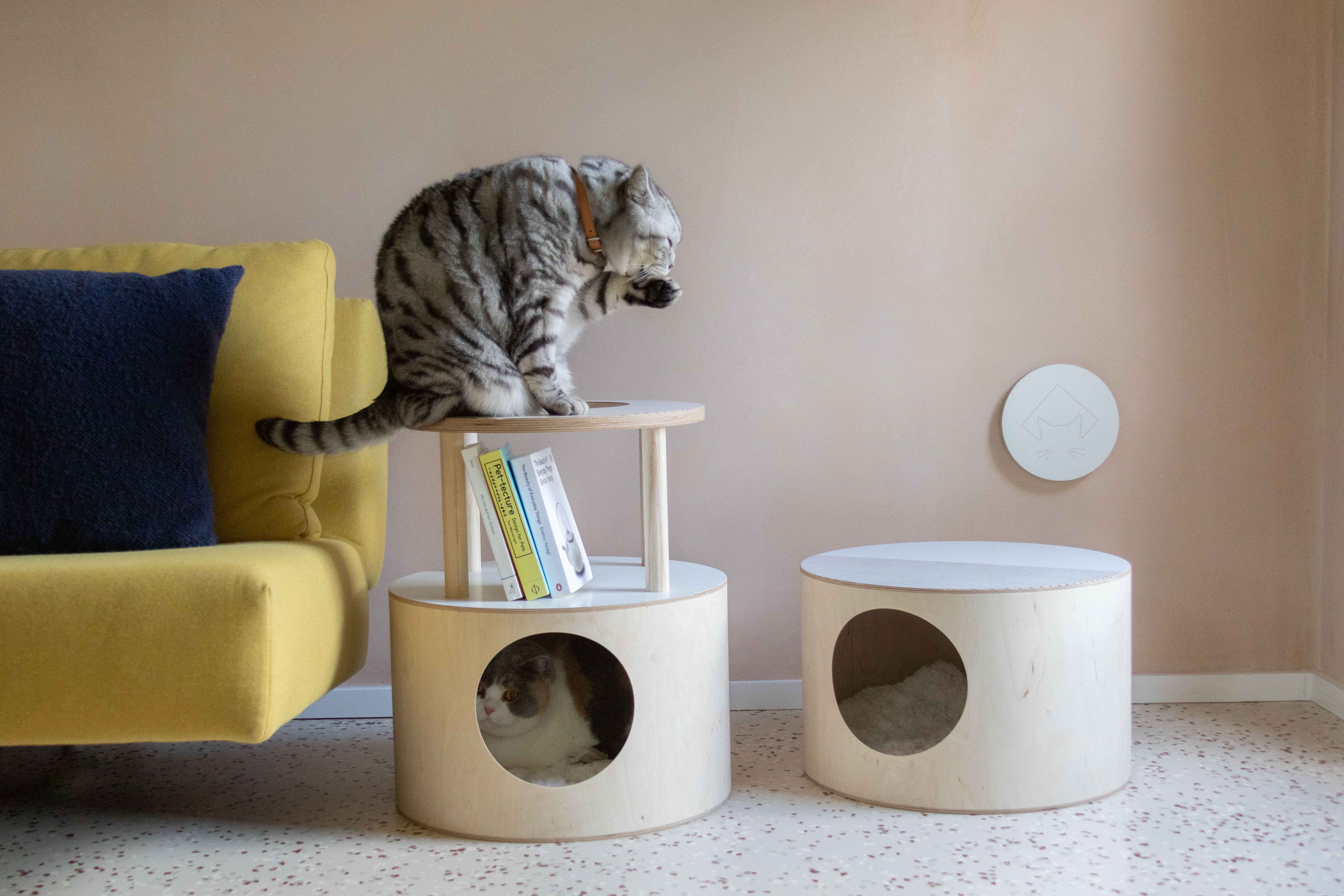
'Secondly, the creation of vertical space is really important for cats,' Sonja adds. 'Just like humans, cats love a room with a view. So round Haus 02 builds upon the house with a cat tower which opens up areas. I've found with my two British Shorthairs - what's important in ensuring there's enough space to go around while surveying their smaller worlds from on high.'

Hugh is Livingetc.com’s editor. With 8 years in the interiors industry under his belt, he has the nose for what people want to know about re-decorating their homes. He prides himself as an expert trend forecaster, visiting design fairs, showrooms and keeping an eye out for emerging designers to hone his eye. He joined Livingetc back in 2022 as a content editor, as a long-time reader of the print magazine, before becoming its online editor. Hugh has previously spent time as an editor for a kitchen and bathroom magazine, and has written for “hands-on” home brands such as Homebuilding & Renovating and Grand Designs magazine, so his knowledge of what it takes to create a home goes beyond the surface, too. Though not a trained interior designer, Hugh has cut his design teeth by managing several major interior design projects to date, each for private clients. He's also a keen DIYer — he's done everything from laying his own patio and building an integrated cooker hood from scratch, to undertaking plenty of creative IKEA hacks to help achieve the luxurious look he loves in design, when his budget doesn't always stretch that far.